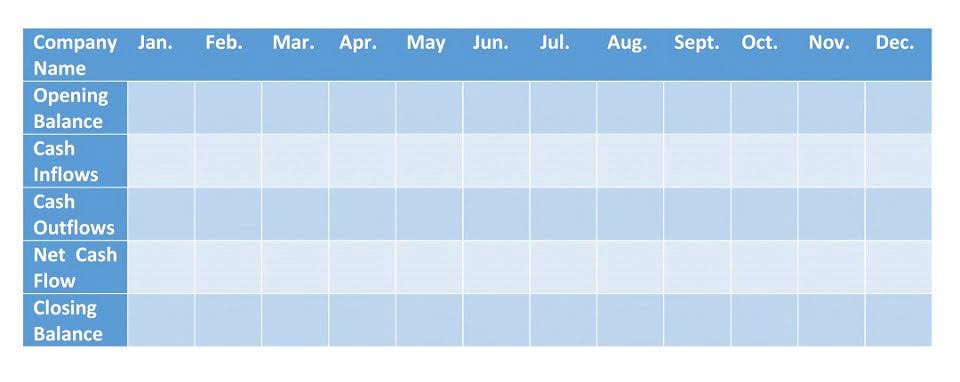
However, the difference between the two figures in this case would be a debit balance of $2,000, which is an abnormal balance. This situation could possibly occur with an overpayment to a supplier or an error in recording. In accounting, the capital account shows the net worth of a business at a specific point in time. It is also known capital normal balance as owner’s equity for a sole proprietorship or shareholders’ equity for a corporation, and it is reported in the bottom section of the balance sheet. Under the accrual basis of accounting, the Service Revenues account reports the fees earned by a company during the time period indicated in the heading of the income statement.
Normal balances of accounts chart”” data-sheets-userformat=””2″:513,”3″:”1″:0,”12″:0″>Normal balances of accounts chart

Equity (what a company owes to its owner(s)) is on the right side of the Accounting Equation. Liabilities (what a company owes to third parties like vendors or banks) are on the right side of the Accounting Equation. Assets (what a company owns) are on the left side of the Accounting Equation. If an account has a Normal Debit Balance, we’d expect that balance to appear in the Debit (left) side of a column. If an account has a Normal Credit Balance, we’d expect that balance to appear in the Credit (right) side of a column. We will apply these rules and practice some more when we get to the actual recording process in later lessons.
Cash Flow Statement
Revenue is the income that a company earns from its business activities, typically from the sale of goods and services to customers. When a company makes a sale, it credits the Revenue account. So, if a company takes out a loan, it would credit the Loan Payable account. For reference, the chart below sets out the type, side of the accounting equation (AE), and the normal balance of some typical accounts found within a small business bookkeeping system.
What are the Normal Balances of each type of account?

After spiking to 65, the highest level since 2020, the VIX ended the day ~38 suggesting there was more volatility to come with all eyes turning to Asian markets overnight. There was a rebound with the Nikkei rallying 10% recouping a good portion of the previous day’s declines. European indices, which only suffered modest losses yesterday, opened higher but struggled to hold gains. From a headline perspective it was reasonably quiet without much in the way of impactful economic data while the world continued to wait on a response from Iran in the Middle East. As we approached the US open there was a tepid bid in futures, but the activity was much more subdued than yesterday’s buzz.

So for example a debit entry to an asset account will increase the asset balance, and a credit entry to a liability account will increase the liability. The normal balance of all asset and expense accounts is debit where as the normal balance of all liabilities, and equity (or capital) accounts is credit. The normal balance of a contra account (discussed later in this article) is always opposite to the main account to which the particular contra account relates. The balance of payments, which records all of the transactions a country makes with other countries in a specific period, consists of the capital account and the current account. The current and capital accounts represent two halves of a nation’s balance of payments. The current account represents a country’s net income over a period of time, while the capital account records the net change of assets and liabilities during a particular year.
- If an account has a Normal Debit Balance, we’d expect that balance to appear in the Debit (left) side of a column.
- After these transactions, your Cash account has a balance of $8,000 ($10,000 – $2,000), and your Equipment account has a balance of $2,000.
- Since your company did not yet pay its employees, the Cash account is not credited, instead, the credit is recorded in the liability account Wages Payable.
- Each account type (Assets, Liabilities, Equity, Revenue, Expenses) is assigned a Normal Balance based on where it falls in the Accounting Equation.
- The ending account balance is found by calculating the difference between debits and credits for each account.
- Sales are reported in the accounting period in which title to the merchandise was transferred from the seller to the buyer.
- Therefore, to increase Accumulated Depreciation, you credit it.
That normal balance is what determines whether to debit or credit an account in an accounting transaction. Thus, if you want to increase Accounts Payable, you credit it. We can illustrate each account type and its corresponding debit and credit effects in the form of an expanded accounting equation.
- It aids in maintaining accurate financial records and statements that mirror the true financial position of your business.
- That is, if the account is an asset, it’s on the left side of the equation; thus it would be increased by a debit.
- The gain is the difference between the proceeds from the sale and the carrying amount shown on the company’s books.
- For contra-asset accounts, the rule is simply the opposite of the rule for assets.
- If a company pays rent, it would debit the Rent Expense account.
4 Rules of Debit (DR) and Credit (CR)
If the customer purchased on credit, a sales allowance will involve a debit to Sales Allowances and a credit to Accounts Receivable. After these transactions, your Cash account has a balance of $8,000 ($10,000 – $2,000), and your Equipment account has a balance of $2,000. Double Entry Bookkeeping is here to provide you with free online information to help you learn and understand bookkeeping and introductory accounting. Chartered accountant Michael Brown is the founder and CEO of Double Entry Bookkeeping. He has worked as an accountant and consultant for more than 25 years and has built financial models for all types of industries.

These accounts normally have credit balances that are increased with a credit entry. In a T-account, their balances will be on the right side. In accounting, debits and credits are the fundamental building blocks in a double-entry accounting system. Depending on the account type, an increase or decrease can either be a debit or a credit.
- The balance of payments is composed of a capital account and a current account—though a narrower definition breaks down the capital account into a financial account and a capital account.
- The capital account, in international macroeconomics, is the part of the balance of payments that records all transactions made between entities in one country with entities in the rest of the world.
- When owners invest more into the business, you credit the equity account, hence, it has a normal credit balance.
- For example, terms of “1/10, n/30” indicates that the buyer can deduct 1% of the amount owed if the customer pays the amount owed within 10 days.
- Revenues and gains are recorded in accounts such as Sales, Service Revenues, Interest Revenues (or Interest Income), and Gain on Sale of Assets.
- When an account has a balance that is opposite the expected normal balance of that account, the account is said to have an abnormal balance.
Permanent accounts are not closed at the end of the accounting year; their balances are automatically carried forward to the next accounting year. Here’s a simple table to illustrate how a double-entry accounting system might work with normal balances. Although each account has a normal balance in practice it is possible for any account to have either a debit or a credit balance depending on the bookkeeping entries made.

